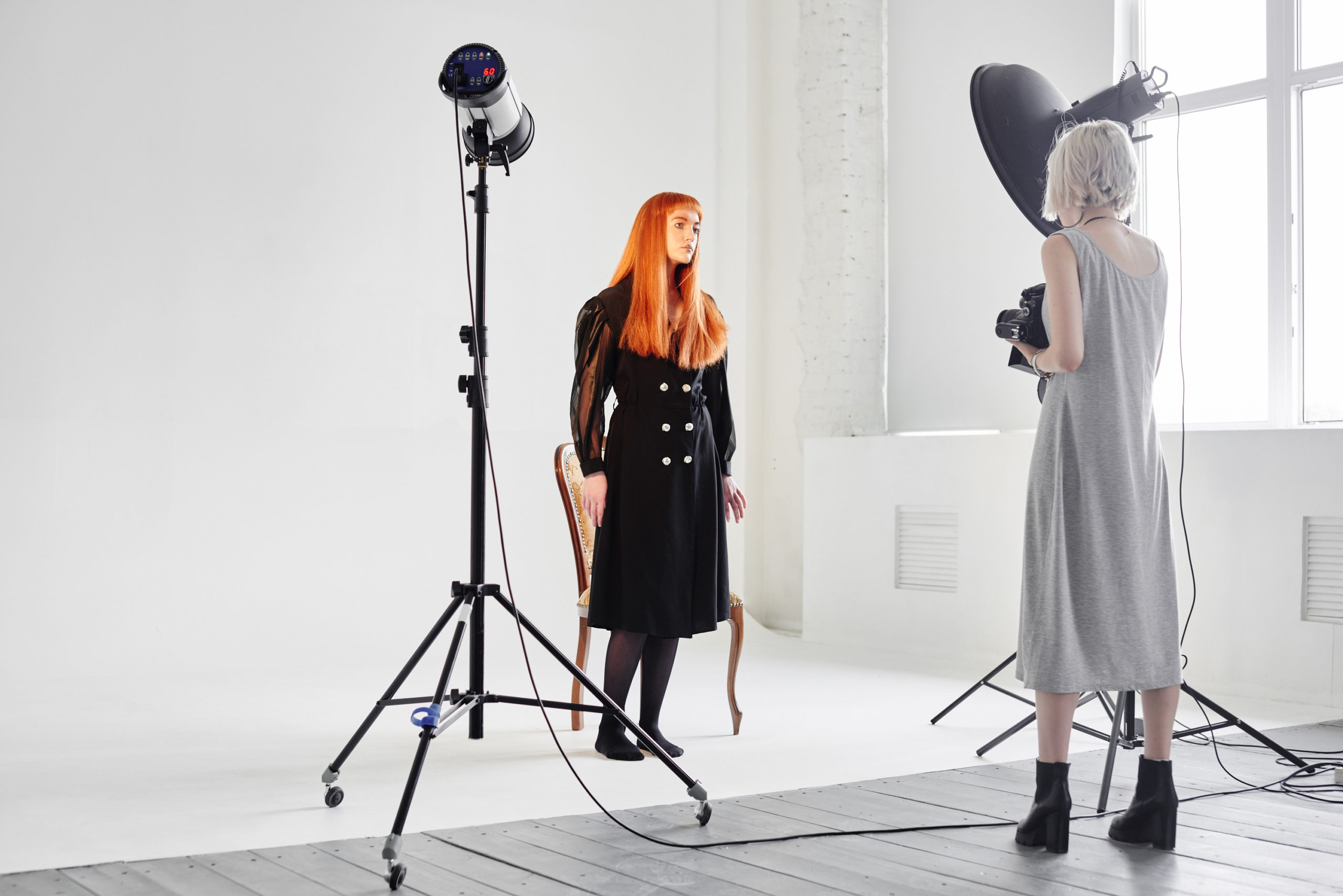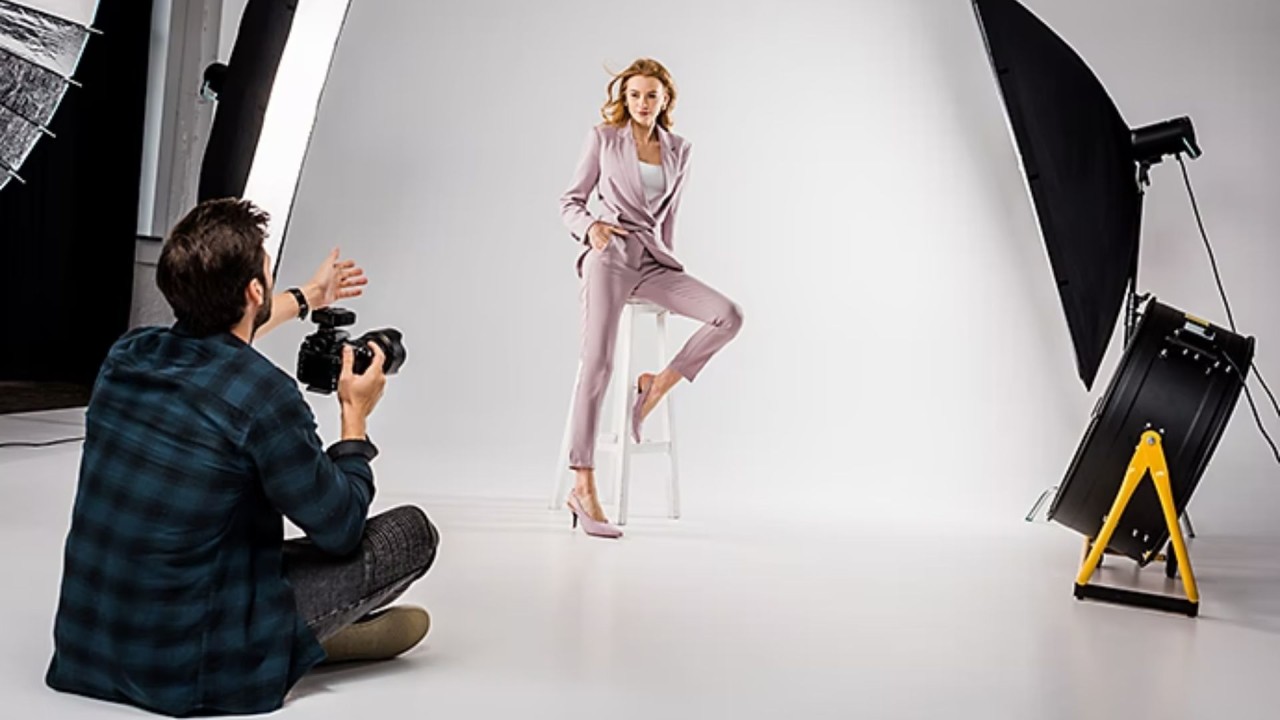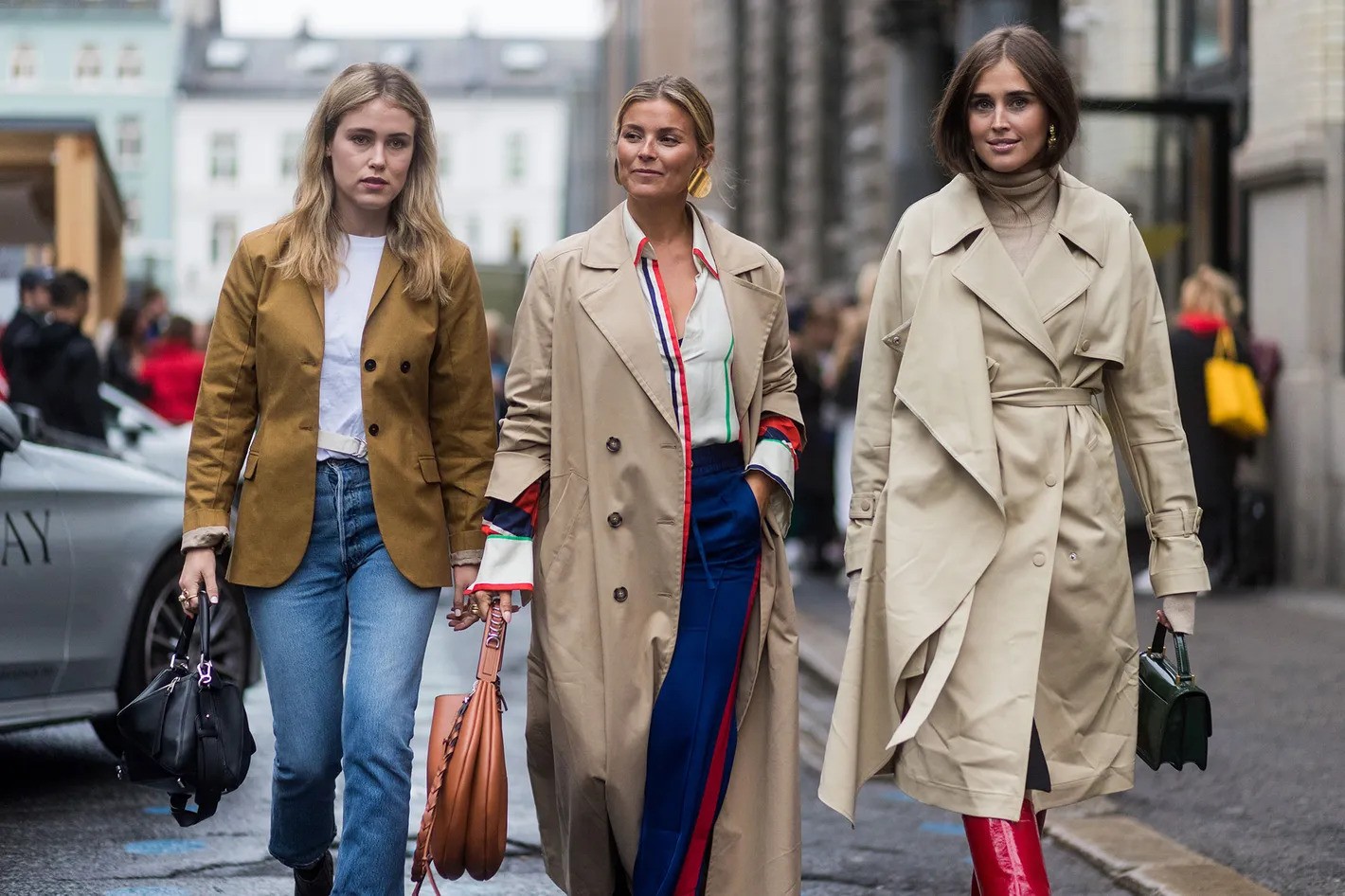Fashion Photography Tips - Elevating Outfit Presentation
Whether you're an aspiring photographer or just looking to improve your Instagram game, mastering the art of fashion photography can take your outfit presentations to the next level. In this article, we'll explore some essential fashion photography tips to help you elevate your outfit presentations and create stunning images that grab attention and inspire.
Author:James PierceReviewer:Elisa MuellerFeb 07, 202467 Shares9.6K Views

Fashion photography is an art form that goes beyond simply capturing clothing; it's about telling a story and showcasing the personality of the garments and the individual wearing them. Whether you're an aspiring photographer or just looking to improve your Instagram game, mastering the art of fashion photography can take your outfit presentations to the next level. In this article, we'll explore some essential fashion photography tipsto help you elevate your outfit presentations and create stunning images that grab attention and inspire.
What Is Fashion Photography?
Fashion photography embodies the convergence of multiple artistic realms. It blends elements of product, portrait, and fine art photography, acting as a dynamic junction where artistic expression and commercial intent intersect.
Within the realm of fashion photography, photographers wield their unique perspectives to spotlight, curate, and communicate narratives within the fashion industry. The spectrum of fashion photography is vast, spanning from meticulously lit studio shots for ecommerce platforms to captivating outdoor shoots in desolate deserts or bustling urban landscapes.
At its core, fashion photography is a form of storytelling, offering boundless opportunities for creative expression. Successful fashion photographers infuse every image with a narrative, allowing them the freedom to alter and evolve the story at will. In this domain, there are no rigid guidelines; the only imperative is to conceive a compelling narrative that resonates with the audience.
Composition Techniques For Fashion Photography
Numerous composition principles guide photographers in crafting visually striking images, each tailored to suit specific genres of photography. In the realm of fashion photography, certain composition rules stand out as particularly effective in enhancing the allure of the subject. Continue reading to discover which principles are most advantageous in this captivating field of photography.
Use The Rule Of Thirds
The rule of thirds serves as a fundamental guideline for achieving balanced compositions. To apply it effectively, mentally divide your frame into nine equal squares, akin to a tic-tac-toe grid. Position your subject at any of the points where these lines intersect to create a visually pleasing arrangement.
Modern cameras often offer a grid-line function to aid in composition. Activate this feature and adjust your camera until your subject aligns with one of the grid intersections on the screen.
Utilizing the rule of thirds is particularly beneficial when unsure of where to place your subject within the frame. Consistently adhering to this principle can significantly enhance your compositions. Over time, it becomes second nature, eliminating the need for grid lines on your camera screen.
Place Your Subject In The Center
Occasionally, breaking the established rules of photography composition can be the key to capturing the desired shot. In fashion portraiture, for instance, disregarding the conventional rule of thirds and placing the subject squarely in the center can yield striking results. This approach immediately draws the viewer's attention to the focal point, amplifying its impact.
However, it's essential to navigate this departure from convention with care, as centering the subject might risk creating a static or lackluster composition. To mitigate this, consider several factors to ensure the success of this unconventional style.
First and foremost, meticulously select a backdrop that offers elements to complement and balance the composition. For example, integrating surrounding flowers to frame the model or leveraging natural lines and shapes can add visual harmony to the image.
Moreover, encourage fluidity and dynamism in the poses of your model to infuse vitality into the photograph. Request movements such as hair flips, arm swings, or subtle leans to infuse the image with grace and charm. These gestures not only prevent the photo from appearing rigid but also contribute to an overall sense of elegance.
Furthermore, directing the model's gaze towards one side can evoke a sense of intrigue, prompting viewers to wonder about the unseen elements beyond the frame. This strategic use of negative space enhances the narrative potential of the image, inviting the audience to engage more deeply with the scene.
Create A Counterbalance
As evident, achieving balance is key to effective composition. However, there are instances where subjects must be placed in unconventional positions. In such cases, employing counterbalance can rectify the composition.
Counterbalance entails integrating another element within the frame to harmonize the image. For instance, in the scenario of a woman seated on a cart, placing her alone at the center would result in imbalance. Introducing another model to push her from behind restores equilibrium to the composition.
Tell A Story
One common pitfall among aspiring fashion photographers is the oversight of incorporating a cohesive visual narrative into their shoots. When flipping through the pages of a fashion magazine, the thematic connection between photos becomes evident, even without accompanying descriptive text. These images subtly offer clues and hints, captivating the viewer's attention and compelling them to delve deeper into the narrative being conveyed.
Integrating a unified concept into your photography imbues each image with a sense of purpose, enticing viewers to engage with every frame presented. While the narrative need not follow a traditional story structure with a clear beginning and end, it should evoke intrigue and curiosity through thoughtful composition and attention to detail.
For example, when capturing a model exploring a cityscape, consider incorporating elements of urban exploration, such as strolling along bustling streets or pausing at a quaint cafe. Use the surrounding environment to provide visual cues and context, prompting viewers to ponder the story unfolding within the frame.
By leveraging composition and subtle visual storytelling techniques, you can create a series of images that not only captivate the eye but also invite viewers to immerse themselves in the narrative, making for a more engaging and memorable photographic experience.
Bring Props
Using props in fashion photography serves multiple purposes, enriching the thematic coherence of your images while enhancing compositional depth. Props not only provide contextual clues but also infuse visual interest, particularly in scenes that may otherwise lack dynamism.
For instance, when confronted with a bland background, introducing a prop such as a skateboard can instantly transform the scene, adding layers of visual intrigue. The prop, when strategically placed, not only frames the subject but also guides the viewer's gaze, drawing attention to the focal point amidst negative space.
Moreover, props offer opportunities to create surrealistic compositions by juxtaposing unexpected elements. This deliberate arrangement of objects - be they lines, curves, or shapes - serves to emphasize the primary point of interest, fostering a captivating visual narrative.
In essence, props serve as versatile tools in fashion photography, enriching compositions and elevating storytelling potential through their strategic placement and interplay with the surrounding elements.
Look For The Appropriate Background
When shooting, always remain attentive to the background as it plays a crucial role in your composition. It's not just about positioning the model; you must also consider how background elements affect the overall balance of your image.
Tailor your composition style to complement the garment being photographed. Avoid backgrounds that clash with the color or pattern of the clothing. Opt for a neutral backdrop for outfits with intricate patterns, while plain garments can be paired with more elaborate backgrounds that enhance their appeal.
Ensure that your backdrop guides the viewer's gaze towards the subject. Utilize lines and curves in the background or foreground to naturally direct attention to your model. Urban environments like streets, railings, and staircases often offer abundant opportunities for incorporating these elements.
Also use squares and rectangles to frame your model, drawing viewers' attention to the subject. However, be mindful of background elements such as buildings, trees, and light poles. Avoid positioning them in a way that appears as if they are protruding from your subject's head, which can detract from the overall composition.
Try Different Angles
When capturing images, don't confine yourself to conventional eye-level angles. Explore your surroundings and consider diverse vantage points from which to photograph your subject. Experiment with shooting from above, below, or even tilting your camera slightly. However, be mindful that altering perspective can significantly impact the mood of a photograph.
Before delving into perspective experimentation, contemplate the specific emotion or atmosphere you aim to convey in your image. Tailor your framing accordingly to reflect this intention. It's crucial to recognize that each angle possesses its own set of advantages and drawbacks, so assess their effects on your audience carefully.
For instance, shooting from a low angle can empower your subject, imbuing them with a commanding presence and emphasizing their attire. Yet, it's important to maintain a suitable distance to prevent the subject from appearing imposing.
Conversely, a high-angle shot can foster intimacy and evoke feelings of freedom, as the camera's proximity to the subject's eyes enhances emotional connection. However, this perspective may also diminish the subject's stature, so reserve it for moments where it aligns with the desired mood.
To infuse your image with edginess, consider employing unconventional perspectives like the Dutch tilt. This technique, involving a diagonal camera tilt, conveys a sense of danger and instability, particularly effective in gritty urban settings. Nonetheless, be mindful of the tilt's potential to evoke discomfort and anxiety due to its inherent imbalance.
Highlight The Fashion
What sets fashion photographers apart from regular portrait photographers is their ability to accentuate the clothing in their images. Therefore, always prioritize presenting the outfit effectively, regardless of other considerations.
When posing your subject, ensure that you don't obstruct the details of the outfit. It's your responsibility to ensure that viewers can clearly see the selling points of the product. Avoid using props that may distract the eyes and aim to get close enough to showcase any intricate patterns or details present in the clothing.
Let The Outfit Flow
In the realm of fashion photography, capturing the texture and fluidity of garments presents a unique challenge. Without the benefit of movement, even the most supple fabrics can appear rigid and lifeless. As a fashion photographer, it's your responsibility to convey the inherent smoothness and elegance of the attire your model showcases.
The key lies in infusing images with a sense of movement whenever possible. Encourage your subject to engage in dynamic actions such as running and spinning, allowing the fabric to billow and cascade gracefully. By freezing these moments with your camera, you can capture the fleeting essence of motion, enhancing the visual appeal of the garments.
When garments take flight, as seen in floating skirts or dresses, they often form triangular shapes that contribute to a harmonious composition. These triangular formations not only lend balance to the image but also serve to guide the viewer's gaze towards the central subject. Additionally, utilizing long, flowing dresses can effectively fill negative spaces within the frame, further enhancing visual equilibrium.
However, not all outfits lend themselves to airborne elegance. For more form-fitting ensembles, leverage the model's body to evoke a sense of movement. Encourage poses that accentuate curves, creating sinuous lines that impart a soft and fluid appearance to the fabric.
Fashion Photography Tips - FAQ
What Is The Key To Fashion Photography?
As a fashion photographer, it is very important to learn how to use light correctly. Lighting can make or break your picture, but that doesn't mean you need to spend a lot of money on professional lighting gear. For most of my photos, I use just one light source and a white reflector.
How Do Fashion Photographers Get Clients?
Use platforms like Instagram, Facebook, and LinkedIn to showcase your work, engage with potential clients, and build a strong online presence. Regularly share your latest projects, behind-the-scenes content, and industry insights to position yourself as an authority in fashion photography.
How Do You Direct A Fashion Shoot?
The photographer is the lead, the model follows. If you are stepping on their toes, you won't get the stride you want. If they need a soft lead, speak calmly and softly; if you need them to connect with their inner Bowie, behave that way as well. If you want to make them laugh, start laughing.
Finally
Mastering the art of outfit presentation is a crucial skill for any fashion photographer. By implementing the fashion photography tips outlined in this article, you can elevate your work to new heights.
Remember to prioritize showcasing the unique qualities of each garment, minimize distractions, and create compositions that highlight the beauty and allure of fashion. With practice and dedication, you'll be well on your way to creating captivating fashion photographs that leave a lasting impression.

James Pierce
Author

Elisa Mueller
Reviewer
Latest Articles
Popular Articles

